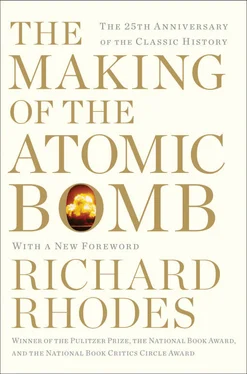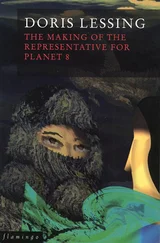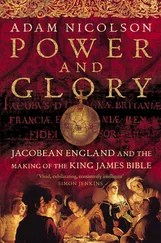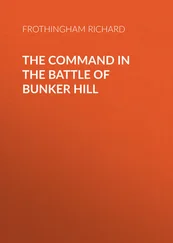These are not nearly all the gases and poisons developed in the boisterous, vicious laboratory of the Great War. There were sneezing gases and arsenic powders and a dozen tear gases and every combination. The French loaded artillery shells with cyanide—to no point except hatred, as it turned out, because the resulting vapors were lighter than air and immediately lofted away. By 1918 a typical artillery barrage locomoting east or west over the front lines counted nearly as many gas shells as high-explosive. 350Germany, always logical at war to the point of inhumanity, blamed the French and courted a succession of increasingly desperate breakthroughs. The chemists, like bargain hunters, imagined they were spending a pittance of tens of thousands of lives to save a purseful more. Britain reacted with moral outrage but capitulated in the name of parity.
It was more than Fritz Haber’s wife could bear. Clara Immerwahr had been Haber’s childhood sweetheart. She was the first woman to win a doctorate in chemistry from the University of Breslau. After she married Haber and bore him a son, a neglected housewife with a child to raise, she withdrew progressively from science and into depression. Her husband’s work with poison gas triggered even more desperate melancholy. “She began to regard poison gas not only as a perversion of science but also as a sign of barbarism,” a Haber biographer explains. “It brought back the tortures men said they had forgotten long ago. It degraded and corrupted the discipline [i.e., chemistry] which had opened new vistas of life.” 351She asked, argued, finally adamantly demanded that her husband abandon gas work. Haber told her what he had told Hahn, adding for good measure, patriot that he was, that a scientist belongs to the world in times of peace but to his country in times of war. 352Then he stormed out to supervise a gas attack on the Eastern Front. Dr. Clara Immerwahr Haber committed suicide the same night.
* * *
The Allied campaign at Gallipoli began on April 25, 1915. The rough, southward-descending Gallipoli Peninsula looked westward toward the Aegean; eastward, across the narrow strait known as the Dardanelles—to the ancients and to Lord Byron, the Hellespont—it faced Turkish Asia. Capture the peninsula; control the Dardanelles, then the Sea of Marmara above, then the narrow Bosporus Strait that divides Europe from Asia, then Constantinople, and you might control the Black Sea, into which the Danube drains—a vast flanking movement against the Central Powers. Such were the ambitions of the War Cabinet, chivvied by Winston Churchill, for the Dardanelles campaign. The Turks, whose land it was, backed by the Germans, opposed the operation with machine guns and howitzers.
One Australian, one New Zealand, one French colonial and two British divisions landed at Gallipoli to establish narrow beachheads. The water of one beachhead bay churned as white at first as a rapid, the Turks pouring down ten thousand rounds a minute from the steep cliffs above; then it bloomed thick and red with blood. Geography, error and six Turkish divisions under a skillful German commander forestalled any effective advance. By early May, when a British Gurkha and a French division arrived to replace the Allied depletions, both sides had chiseled trenches in the stony ground.
The standoff persisted into summer. Sir Ian Hamilton, the Allied commander, Corfu-born, literary, with a Boer-stiffened right arm and the best of intentions, appealed for reinforcements. The War Cabinet had reorganized itself and expelled Churchill; it assented with reluctance to Hamilton’s appeal and shipped out five divisions more.
Harry Moseley shipped out among them. He was a signaling officer now, 38th Brigade, 13th Infantry Division, one of Lord Kitchener’s New Army batches made up of dedicated but inexperienced civilian volunteers. At Gibraltar on June 20 he signaled his mother “Our destination no longer in doubt.” 353At Alexandria on June 27 he made his will, leaving everything, which was £2,200, to the Royal Society strictly “to be applied to the furtherance of experimental research in Pathology Physics Physiology Chemistry or other branches of science but not in pure mathematics astronomy or any branch of science which aims merely at describing cataloguing or systematizing.” 354
Alexandria was “full of heat flies native troops and Australians” and after a week they sailed on to Cape Helles on the southern extremity of the Gallipoli Peninsula, a relatively secure bay behind the trench lines. 355There they could ease into combat in the form of artillery shells lobbed over the Dardanelles to Europe, as it were, from Turkish batteries in Asia. If men were bathing in the bay a lookout on the heights blew a trumpet blast to announce a round coming in. Centipedes and sand, Harry dispensing chlorodyne to his men to cure them of the grim amebic dysentery everyone caught from the beaches, Harry in silk pajamas sharing out the glorious Tiptree blackberry jam his mother sent. “The one real interest in life is the flies,” he wrote her. “No mosquitoes, but flies by day and flies by night, flies in the water, flies in the food.” 356
Toward the end of July the divisions crossed to Lemnos to stage for the reinforcing invasion. That was to divide the peninsula, gain the heights and outflank the Turkish lines toward Helles. Hamilton secreted twenty thousand men by the dark of the moon into the crowded trenches at a beach called Anzac halfway up the peninsula and the Turks were none the wiser. The remainder, some seventeen thousand New Army men, came ashore on the night of August 6, 1915, at Sulva Bay north of Anzac, to very little opposition.
When the Turks learned of the invasion they moved new divisions down the peninsula by forced march. The objective of the 38th Brigade, what was left of it toward the end, after days and nights of continuous marching and fighting, was an 850-foot hill, Chanuk Bair, inland a mile and a half from Anzac. To the west of Chanuk Bair and lower down was another hill with a patch of cultivated ground: the Farm. Moseley’s column, commanded by Brigadier A. H. Baldwin, struggling up an imprisoning defile a yard wide and six hundred feet deep, found its way blocked by a descending train of mules loaded with ammunition. That was scabby passage and the brigadier in a fury of frustration led off north toward the Farm “over ghastly country in the pitch dark,” says the brigade machine gunner, the men “falling headlong down holes and climbing up steep and slippery inclines.” 357But they reached the Farm.
Baldwin’s force then held the far left flank of the line of five thousand British, Australians and New Zealanders precariously dug into the slopes below the heights of Chanuk Bair, which the Turks still commanded from trenches.
The Turkish reinforcements arrived at night and crowded into the Chanuk trenches, thirty thousand strong. They launched their assault at dawn on August 10 with the sun breaking blindingly at their backs. John Masefield, the British poet, was there and lived to report: “They came on in a monstrous mass, packed shoulder to shoulder, in some places eight deep, in others three or four deep.” On the left flank “the Turks got fairly in among our men with a weight which bore all before it, and what followed was a long succession of British rallies to a tussle body to body, with knives and stones and teeth, a fight of wild beasts in the ruined cornfields of The Farm.” 358Harry Moseley, in the front line, lost that fight.
When he heard of Moseley’s death, the American physicist Robert A. Millikan wrote in public eulogy that his loss alone made the war “one of the most hideous and most irreparable crimes in history.” 359
* * *
Six miles below Dover down the chalk southeastern coast of England the old resort and harbor town of Folkestone fills a small valley which opens steeply to the strait. 360Hills shelter the town to the north; the chalk cliff west sustains a broad municipal promenade of lawns and flower beds. The harbor, where Allied soldiers embarked in great numbers for France, offers the refuge of a deep-water pier a third of a mile long with berths for eight steamers. The town remembers William Harvey, the seventeenth-century physician who discovered the circulation of the blood, as its most distinguished native son.
Читать дальше












